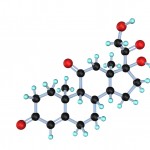
Pain and discomfort following root canal treatment is not uncommon with studies reporting an incidence ranging from 3-58%. Non-steroidal anti-inflammatory drugs (NSAIDs) have been shown to reduce post-endodontic pain and studies involving the use of corticosteroids have also been undertaken.
The aim of this review was to assess the efficacy of corticosteroids on postoperative endodontic pain.
Methods
Searches were conducted in the PubMed, Cochrane Register of Controlled trials, Scopus, Web of Science and Google Scholar with no date or language restrictions. Randomised controlled trials (RCTs) in patients>15 yrs of age comparing the efficacy of corticosteroids (using any route) with placebo in reducing postoperative endodontic pain were considered.
Two reviewers screened studies, extracted data and assessed risk of bias using the Cochrane tool. The main outcome was pain intensity at 6, 12, and 24 hours postoperatively. Standardised mean differences (SMDs) with their 95% confidence intervals (CIs) were estimated and the pooled effect was measured using the random effect inverse variance method.
Results
- 18 RCTs involving a total of 1028 patients were included.
- A range of corticosteroids and dosage regimes were used.
- Meta-analysis showed that patients receiving corticosteroids reported significantly lower pain scores at 6, 12 and 24hrs opt0eratively.
| Pain Scores | No of studies/comparisons | SMD (95%CI) |
| At 6 hrs | 17 | -1.03 (-1.55 to -0.51) |
| At 12 hrs | 14 | -1.089 (-1.71 to -0.46) |
| At 24 hrs | 20 | -0.957 (-1.34 to -0.56) |
Conclusions
The authors concluded: –
we hypothesized that the administration of corticosteroid drugs might be effective in reducing pain intensity in the first 24 hours after root canal treatment. The analgesic efficacy of corticosteroids can be influenced by the type and dose of the drug.
Comments
The authors have conducted a broad search for studies to answer this question identifying 18 studies. while they have used the Cochrane risk of bias tool is assess study quality they have not used the standard presentation of high, low or unclear risk of bias. However, given that none of the studies provided details regarding allocation concealment and there is a lack of information on the included groups in 7 of the studies none of the included studies could be considered to be at low risk of bias.
A wide range of corticosteroids and dosing schemes were used eg. dexamethasone (dose from 0.75–30 mg; betamethasone (2 and 4 mg); prednisolone 30 mg and triamcinolone 1 mg. This together with different times of administration, pre-op; intra-operative and post-op contributed to marked heterogeneity in the meta-analysis. Although all the findings demonstrate a reduction in post-operative endodontic pain at all three time points examined.
We recently reported on a large single centre RCT (Dental Elf – 18th Aug 2017) comparing 40Mg prednisolone against placebo that was not included in this review although it was published within the stated search window for this review. That study also demonstrated a reduction in pain with corticosteroid use.
Links
Primary Paper
Shamszadeh S, Shirvani A, Eghbal MJ, Asgary S. Efficacy of Corticosteroids on Postoperative Endodontic Pain: A Systematic Review and Meta-analysis. J Endod.2018 Apr 28. pii: S0099-2399(18)30210-3. doi: 10.1016/j.joen.2018.03.010. [Epub ahead of print] Review. PubMed PMID: 29709296.
Other references
Dental Elf – 18th Aug 2017
